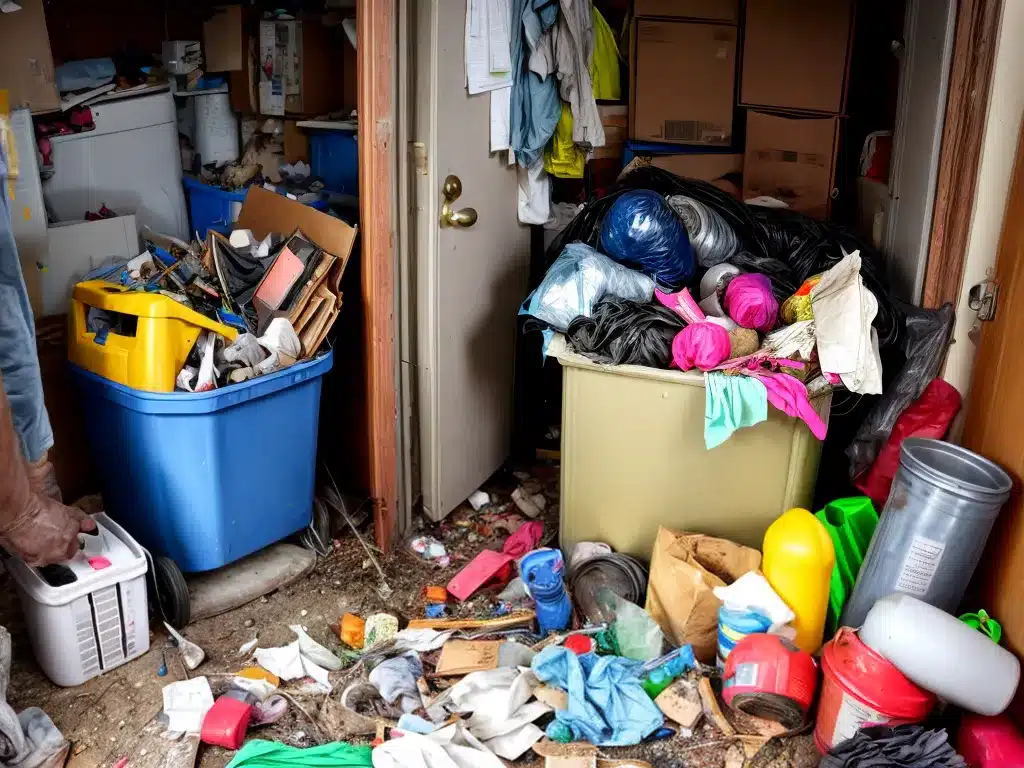Understanding Hoarding Disorder
Hoarding is more than simply being messy or disorganized. It is a psychological disorder characterized by persistent difficulty discarding possessions, regardless of their actual value or usefulness. This leads to an accumulation of items that congest living spaces and compromise safety.
As a hoarder, I struggle with intense emotional attachments to possessions. Parting with items fills me with unbearable anxiety. However, living in cluttered, chaotic spaces also causes distress. My hoarding behaviors started in childhood and have gotten progressively worse over time.
Experts believe hoarding disorder is caused by a combination of genetic, neurological, and environmental factors. Trauma, grief, social isolation, and perfectionism can also contribute to hoarding. Current research suggests that abnormalities in the frontal lobes and limbic system of the brain may drive hoarding behaviors.
Dangers of Hoarded Homes
While hoarding feels comforting and safe to me, it poses real risks to my health and home. Excess clutter is a fire hazard as it fuels the spread of flames and blocks escape routes. It also invites pests like mice, cockroaches, and bed bugs which can spread diseases.
Rotting food, animal feces, and mold from damp clutter create unhealthy air quality and respiratory risks. Navigating narrow trails through teetering piles leads to frequent falls and injuries. The shame and isolation of living in squalor takes a toll on mental health as well.
My hoard also places a terrible burden on loved ones. They desperately want me to get better but feel powerless. Clearing attempts often end in arguments and rarely result in lasting change. I want to restore safety and repair strained relationships. The time has come for a new approach.
Preparing for a Major Clearing Effort
Embarking on an extensive decluttering process can feel overwhelming. However, careful planning and a step-by-step system increase the chances of success. Here are some key preparation steps:
Set Realistic Goals
I will start by designating specific areas like the kitchen, bedroom, or hallway as priority decluttering zones. Setting achievable goals is vital – I cannot organize the whole house at once. My initial focus will be making high-traffic areas functional and safe.
Establish Support System
I will enlist family members and friends to provide morale boosts and accountability. Joining a hoarding support group connects me with others facing the same condition. Their camaraderie makes the journey less lonely. My therapist will help me work through emotional obstacles.
Sort Possessions Mindfully
I plan to sort items into “trash,” “donate,” and “keep” piles. Each possession must be evaluated based on necessity and emotional value. Automatic keeping or reckless discarding items will undermine progress. I will employ mindful decision making and cognitive behavioral therapy techniques to combat hoarding thoughts.
Schedule Frequent Breaks
Taking adequate breaks prevents burnout which could derail efforts. Short breaks every 30 minutes allow me to rest and renew motivation. Longer breaks for meals, sleep, and exercise are also essential. There is no rush – progress will come steadily as long as I pace myself.
Secure Help Removing Items
Once sorted, I cannot simply relocate discards into a different room. Enlisting friends to promptly haul away trash bags and donations ensures clutter will not reaccumulate. A junk removal service provides an affordable option if help is unavailable.
Step-By-Step Decluttering Process
With the prep work done, I am ready to tackle each designated zone. I will utilize the following step-by-step process:
Categorize and Group Like Items
I begin by surveying the area and grouping similar items – papers with papers, books with books, etc. This creates manageable chunks rather than one giant mess. Related items can be sorted and evaluated together.
Decide Item’s Fate One by One
I will handle each item individually, asking key questions:
– Do I use or need this?
– Does it spark joy or serve a purpose?
– Have I used it in the past year?
– Would replacing it bring me more joy than keeping it?
– Who could make better use of it?
Discard Trash Promptly
Anything damaged, expired, or utterly useless gets immediately discarded in trash bags. Leaving trash intermixed undermines motivation so I will get rid of it right away. For extra accountability, I will take trash bags directly to the dumpster.
Donate Items In Good Condition
Clothes, furniture, books, and housewares still in good shape can bless someone else via donation. I will pack items directly into boxes and bags so they are ready to go. Having donations picked up means gone for good!
Find Homes for Keep Items
For belongings I choose to keep, I will designate a specific place to store them. Unassigned keep piles often turn back into clutter. Assigning items a designated drawer, shelf, or container keeps spaces orderly.
Maintaining Progress Long-Term
To ensure my home does not revert to unhealthy clutter, I must stay vigilant:
-
Adhere to my newly established organizational systems – file paperwork promptly, put items back in their assigned places.
-
Tackle new messes immediately before they spiral out of control.
-
Let go of additional items as I realize I do not use them. Avoid accumulating new clutter.
-
Celebrate small daily victories like sorting one drawer – focus on progress.
-
Lean on my support system during moments of crisis or relapse.
-
Be compassionate with myself – recovery is a journey with ups and downs.
Healing from hoarding and reclaiming my space and life will take time and effort. But I am capable of overcoming this disorder. By employing proven strategies and supports, I can create a cleaner, safer living environment. The journey begins with a single cleared corner – wish me luck!







